| Date | Text | |
|---|---|---|
30 Nov 1998

Namibia |
Namibia (biology) The bacterium Thiomargarita namibiensis is discovered off the coast of Namibia. At 0.3mm in diameter, it is largest bacteria yet discovered. |
|
30 Nov 1998
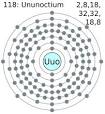
Element 118 |
Element 118 (chemistry) Element 118 and 116 are claimed to be made for the first time. Later retracted when results could not be replicated. |
|
30 Nov 1998

3-qubit |
3-qubit (computer science) First working 3-qubit NMR computer demonstrated at IBM's Almaden Research Center. First execution of Grover's algorithm. |
|
30 Nov 1998

Neil Sloane |
Neil Sloane (mathematics) Eric M. Rains and Neil Sloane extend tree counting. |
|
30 Nov 1998

CERN |
CERN (physics) CERN: Bulgaria becomes a member of CERN. |
|
30 Nov 1998

Huda Zoghbi |
Huda Zoghbi (physiology and medic) Huda Zoghbi demonstrates that Rett syndrome is caused by mutations in the gene MECP2. |
|
30 Nov 1998

BlackBerry |
BlackBerry (telecommunications) The first BlackBerry is released, using the same hardware as the Inter@ctive pager 950, and running on the Mobitex network. |
|
30 Nov 1998

Turing Award |
Turing Award (awards) Turing Award: Fred Brooks |
|
30 Nov 1998
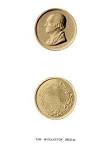
Wollaston Medal for Geology |
Wollaston Medal for Geology (awards) Wollaston Medal for Geology: John Frederick Dewey |
|
25 Jan 1999
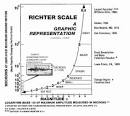
Richter scale |
Richter scale (geology) A 6.0 Richter scale earthquake hits western Colombia, killing at least 1,000. |
|
21 Feb 1999
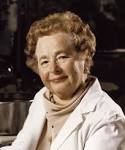
Gertrude B. Elion |
death Gertrude B. Elion Gertrude B. Elion (b. 1918), American pharmacologist, Nobel laureate in Physiology or Medicine. |
|
25 Feb 1999
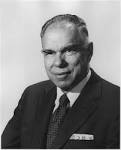
Glenn T. Seaborg |
death Glenn T. Seaborg Glenn T. Seaborg (b. 1912), American physical chemist, Nobel laureate in Chemistry. |
|
27 Feb 1999

circumnavigate |
circumnavigate (aeronautics) While trying to circumnavigate the world in a hot air balloon, Colin Prescot and Andy Elson set a new endurance record after being in their balloon for 233 hours and 55 minutes. |
|
03 Mar 1999
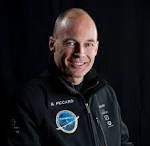
Bertrand Piccard |
Bertrand Piccard (aeronautics) Bertrand Piccard and Brian Jones successfully complete a non-stop circumnavigation of the world in a hot air balloon. |
|
26 Mar 1999
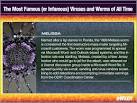
Melissa worm |
Melissa worm (computer science) The Melissa worm attacks the Internet. |
|
31 Mar 1999
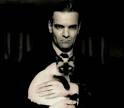
Yuri Valentinovich Knorozov |
death Yuri Valentinovich Knorozov Died 31 Mar 1999 at age 76 (born 19 Nov 1922). Russian linguist, epigraphist, and ethnologist who played a major role in the decipherment of Mayan hieroglyphic writing. Remarkably, though not permitted to leave the Soviet Union during the post-war decades he focused on the Mayan language, Knorozov still managed to decipher the phonetic code of the pre-Columbian society on the Mexican peninsula. Others before him had tried to "read" Maya glyphs without success, because they tried to interpret them in terms of an alphabet. Knorozov instead advocated phoneticisms. He realized that the purported alphabet represented a part of the Maya syllabary, and then identified many of the syllabic marks, or glyphs, found on the many Mayan tombs and monuments. |
|
25 Apr 1999
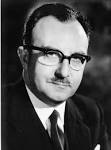
Sir William McCrea |
death Sir William McCrea Died 25 Apr 1999 at age 94 (born 13 Dec 1904). Sir William Hunter McCrea was an Irish theoretical astrophysicist whose early work was in quantum physics, relativity and pure mathmatics, but he gradually turned to applying theoretical physics in astronomy. He ranged from considering the stellar atmospheres, planet formation, cosmology and indeed, the formation of stars and the universe. He was an early advocate that stars have a high hydrogen content. He studied gas dynamics, as in the formation of hydrogen in molecular form in dusty interstellar clouds, and developed a theory of the transition from increasing density to conditions sufficient for gravitational collapse and possible star formation. Although he at first was open-minded to the steady state theory of the universe proposed by Hermann Bondi, Thomas Gold and Fred Hoyle, McCrea's work and others accumulated evidence for the Big Bang theory. |
|
28 Apr 1999

Arthur Leonard Schawlow |
death Arthur Leonard Schawlow Arthur Leonard Schawlow (b. 1921), American physicist, Nobel laureate in Physicist. |
|
08 May 1999

Edward Abraham |
death Edward Abraham Edward Abraham (b. 1913), English biochemist. |
|
26 May 1999
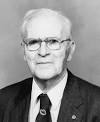
Waldo Semon |
death Waldo Semon Waldo Semon (b. 1898), American inventor. |
|
01 Jun 1999

RFC 2616 |
RFC 2616 (computer science) RFC 2616 defines HTTP/1.1, the version of Hypertext Transfer Protocol in common use. |
|
22 Jun 1999

Brain signals control robot |
Brain signals control robot In 1999, the first demonstration of brain signals from live rat directly controlling a robot arm was published by Nature Neuroscience. The research was hailed as a breakthrough by other scientists working to combine computing with biology. Researchers from MCP Hahnemann University medical school and Duke University taught laboratory rats to operate a water-dispensing robot by thought alone. Their aim is to restore movement to patients who are paralyzed or have had limbs amputated. At first, the robot was controlled by the rat pressing a lever and researchers identified the corresponding brain activity. Then the robot was linked to a computer interpreting the rats' brain signals. The rats gained water merely by thinking about pawing the lever. |
|
08 Jul 1999
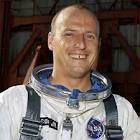
Pete Conrad |
death Pete Conrad Pete Conrad (b. 1930), American astronaut. |
|
17 Aug 1999
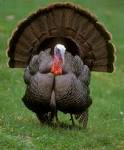
Turkey |
Turkey (geology) A 7.4-magnitude earthquake strikes northwestern Turkey, killing more than 17,000 and injuring 44,000. |
|
23 Aug 1999
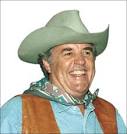
Charles Davis Hollister |
death Charles Davis Hollister Died 23 Aug 1999 at age 63 (born 18 Mar 1936). American marine geologist whose pioneering studies of the deep-sea floor revealed not tranquil depths but that strong currents and storms occur there. He started the development of the giant piston coring system and in the 1970's, documented the longest continuous record of ocean basin history in a single 100-ft core sample that contained a continuous 65 million-year-long record of ocean-basin history. He also made significant discoveries concerning ocean sediment transport and directed the High Energy Benthic Boundary Layer Experiment (HEBBLE). Also, he initiated the sub-seabed concept and led the international team that studied the scientific feasibility of isolating high-level radioactive material into sediments below the sea floor. |
|
23 Sep 1999
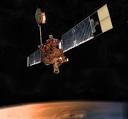
Mars probe lost |
Mars probe lost In 1999, the Mars Climate Observer apparently burned up as it was about to go into orbit around the Red Planet. |
|
01 Nov 1999

Agreement on the Conservation of African-Eurasian Migratory Waterbirds |
Agreement on the Conservation of African-Eurasian Migratory Waterbirds (biology) Agreement on the Conservation of African-Eurasian Migratory Waterbirds comes into force. |
|
11 Nov 1999

Vivian Fuchs |
death Vivian Fuchs Vivian Fuchs (b. 1908), English geologist and explorer. |
|
13 Nov 1999

Sir Vivian Ernest Fuchs |
death Sir Vivian Ernest Fuchs Died 13 Nov 1999 at age 91 (born 11 Feb 1908). English geologist and explorer who initiated and led (with Sir Edmund Hillary) the Commonwealth Trans-Antarctic Expedition of 1957-58. In 1929 and 1930-31, Fuchs participated as a geologist on expeditions to East Greenland and the East African lakes. In 1958 Fuchs's 12-man party completed the first land journey across Antarctica in 99 days despite severe hardships, travelling 2,500 miles (4,000 kilometres) from the Filchner Ice Shelf to McMurdo Sound. Along the way a substantial scientific programme had been accomplished, including seismic soundings and a gravity traverse. The findings of the expedition confirmed earlier theories that a single continent exists beneath the Antarctic polar ice sheet. |
|
16 Nov 1999

Daniel Nathans |
death Daniel Nathans Died 16 Nov 1999 at age 71 (born 30 Oct 1928). American microbiologist, corecipient of the Nobel Prize for Physiology or Medicine in 1978 (with American Hamilton Othanel Smith and Swiss scientist Werner Arber). The winners were cited for their discovery and application of restriction enzymes, which provide the "chemical knives" to cut genes (= DNA) into defined fragments. These may then be used (1) to determine the order of genes on chromosomes, (2) to analyse the chemical structure of genes and of regions of DNA which regulate the function of genes, and (3) to create new combinations of genes. Thus new avenues are opened to study the basic problems in developmental biology; and in medicine, to help the prevention and treatment of malformations, hereditary diseases and cancer. |
|
30 Nov 1999

Robert A. Swanson |
death Robert A. Swanson Died 30 Nov 1999 at age 52 (born 29 Nov 1947). American chemist who, at age 29, cofounded Genentech, Inc. (1976), a research-based company that pioneered the biotechnology industry. His cofounder, distinguished biochemist, Herbert Boyer, had developed one of the key techniques that opened up the possibility of the transfer of genes from one organism to another. Boyer was a pioneer using restriction enzymes to snip segments of DNA out of cells. In 1977, Genentech began mass- producing their first human protein by splicing a gene into bacteria. In 1978, Genentech created the first drug produced by genetic engineering, human-type insulin. It was also the first biotechnology company to sell its own drug, human growth hormone. Swanson died after a long battle against brain cancer. |
|
25 Dec 1999
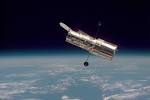
Hubble telescope |
Hubble telescope In 1999, space shuttle Discovery's astronauts finished their mainenance work on the Hubble Space Telescope, installing correcting optics to repair problems due to a design flaw in the mirror. The first images the Hubble Telescope took after its original launch were disappointingly fuzzy, but after this repair mission the instrument returned crisp images of a clarity never before possible from terrestrial observatories. |